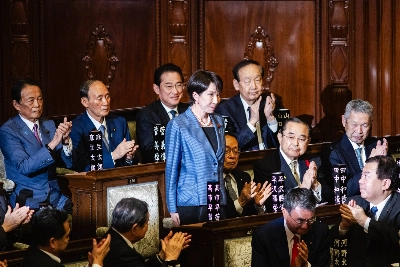Long-term interest rates are on an upward trend in the United States. The yield on 10-year U.S. government bonds, which stood around 3.8 percent in December, has climbed to around 4 percent. But has the U.S. economy been strong enough to trigger a rise in interest rates?
The core price index, closely watched by the Federal Reserve Board as an indicator of price trends, declined in 2002, while the latest employment statistics released Jan. 10 show the number of jobless up by 82,000 from a month earlier to 8.6 million, pushing the unemployment rate to 6 percent. Consumer sentiment is also sagging. Why, then, are interest rates rising at a time when price trends and the real state of the economy do not seem to be pushing rates up?
The biggest reason, ironically, appears to be the nearly $700 billion economic stimulus package announced by President George W. Bush. The fact that such a massive package is needed means there is little room for optimism for the real economy, but the announcement has triggered speculation that interest rates will go up because a large volume of government bonds will be issued to cover the stimulus measures. No such concerns will emerge if domestic savings in the U.S. increase and cover the additional bond issuance, but there are no signs of improvement in the savings rate. The country continues to run current account deficits -- macroeconomic proof that it is experiencing a savings shortage.


















With your current subscription plan you can comment on stories. However, before writing your first comment, please create a display name in the Profile section of your subscriber account page.